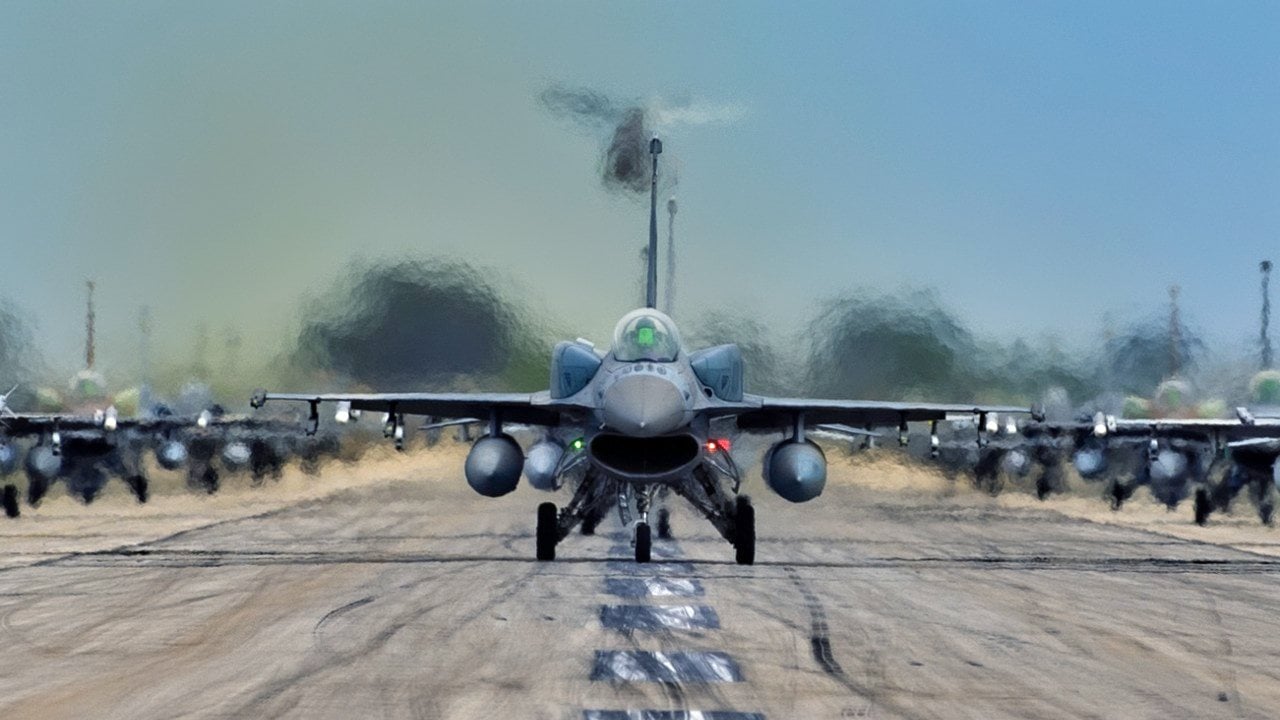The Mighty F-16 Fighter Just 'Lost' to China's J-10 (But Not in Battle)
Cairo has decided to purchase the J-10C to replace its aging fleet of U.S.-made F-16 Fighting Falcons, making Egypt the second country after Pakistan to operate the advanced 4.5-generation fighter.
Summary and Key Points: At the Egypt International Air Show, China showcased the Chengdu J-10C Vigorous Dragon fighter jet, signaling deepening military ties with Egypt.

-Cairo has decided to purchase the J-10C to replace its aging fleet of U.S.-made F-16 Fighting Falcons, making Egypt the second country after Pakistan to operate the advanced 4.5-generation fighter.
-This move highlights China's expanding influence in North Africa and the Middle East, especially as Egypt recently joined the China-led BRICS bloc.
-While the U.S. has offered upgraded F-16Vs, Egypt favors the J-10C for its superior capabilities and comparable cost. Additionally, Egypt continues to diversify its military hardware, operating Russian MiG-29Ms and French Dassault Rafales.
China Expands Influence: Egypt Buys J-10C Fighters Amid Growing Middle East Presence
Attendees to the first Egypt International Air Show, which concluded last Thursday, would have noted a significant Chinese presence – including an aerial display of the Chengdu J-10C Vigorous Dragon (NATO reporting name: Firebird). The single-engine, multirole combat fighter – which features a delta wing and canard design – has been in service with the People's Liberation Army Air Force (PLAAF) since 2004.
It will soon be operating with the Egyptian Air Force, as Cairo has placed an order for the J-10C Vigorous Dragon to replace its aging fleet of U.S.-made F-16 Fighting Falcons. Beijing has been seeking to strengthen its economic and strategic ties with Cairo, which joined the Chinese-led BRICS bloc earlier this year.
Other members of the economic bloc include Brazil, Russia, India, South Africa, Ethiopia, and the United Arab Emirates (UAE). China's presence at the air show – held at the El Alamein International Airport – underscores Beijing's expanding influence into North Africa and the Middle East.
"China is expanding and targeting the [Middle East] regional market," Kostas Tigkos, manager of mission systems and intelligence at global military intelligence company Janes, told Voice of America last week.
"This marks another milestone in China's military diversification and opens doors to more collaboration in security domains, encourages investment opportunities and opens new channels to developing trade beyond traditional ties."

The analyst added that the Middle East now has "China's highest bilateral trade growth rate" and is a "source of half of its imported oil."
Even though Egypt is on track to adopt the Chinese fighters, it still announced a deal this month to acquire two Lockheed Martin C-130J Hercules airlifters via a Foreign Military Sales (FMS) procurement. The U.S. Department of State had previously approved the sale of a dozen of the transport aircraft.
Change of Warbirds – Firebird Over Fighting Falcons
Egypt will now become the second nation to acquire the Chinese-made J-10C after Pakistan, which received the first batch of the 4.5+ generation fighters in early 2022.
Washington had offered Cairo the upgraded F-16V, but as BulgarianMilitary.com reported, "The J-10C offers superior combat capabilities compared to the enhanced F-16 model, all at a comparable cost."
Egypt has been playing the proverbial field when it comes to combat aircraft. Although it operates the F-16, the Egyptian Air Force has also acquired the Mikoyan MiG-29M (NATO reporting name Fulcrum) from Russia, with the first of those aircraft delivered in 2021. Cairo also concluded a deal with Paris to receive the Dassault Rafale beginning in 2015.
By contrast, its fleet of aging F-16s – which were purchased in the 1980s – has been viewed as largely obsolete against modern air defense systems.
"The close to 200 F-16s that form the backbone of the fleet are considered among the least capable fourth generation fighters in the world, and have been heavily downgraded and restricted to using obsolete Cold War era weaponry - and no beyond visual range air to surface weapons whatsoever," Military Watch Magazine reported.

Cairo's decision to select the J-10C over the F-16 may have come down to price and capabilities, but the U.S. support for Israel's operation in Gaza may be part of it. Egyptian officials fear that Palestinians may seek refuge in the country.
Without many other options for modern combat aircraft, it now appears that Egypt is looking to China, and the Vigorous Dragon could soon be flying over the skies of North Africa and the Middle East.
Author Experience and Expertise: Peter Suciu
Peter Suciu is a Michigan-based writer. He has contributed to more than four dozen magazines, newspapers, and websites with over 3,200 published pieces over a twenty-year career in journalism. He regularly writes about military hardware, firearms history, cybersecurity, politics, and international affairs. Peter is also a Contributing Writer for Forbes and Clearance Jobs. You can follow him on Twitter: @PeterSuciu. You can email the author: [email protected].
Image Credit: Creative Commons and/or Shutterstock.


